An electric bicycle is a practical way to get around: It’s eco-friendly, safe, and a good way to get some exercise while you’re at it. Another great thing about e-bikes? You can ride them whatever the weather, even in the snow!
If you want to ride your electric bike through a winter wonderland, it is possible — you don’t even have to buy a dedicated snow bike. That said, there are some precautions to keep in mind when riding in rough terrain.
The guide below provides tips to help you stay safe and ride confidently.
Consider a fat tire e-bike
Safe snow riding starts with the right e-bike. For example, you don’t want to use a road bike in the snow. This style of bike has slim tires without a lot of tread. While that’s great for speeding down paved roadways, it doesn’t provide the traction you need to avoid slipping on slick surfaces.
Instead, opt for a fat tire e-bike like Velotric’s Nomad 1. The robust tires provide more grip on the snowy ground and are wider, giving you more stability. Fat tire bikes are also less prone to tipping, enhancing safety and the fun factor.
Discover the advantages of fat tire bikes.
Use studded tires
Different bike wheels are suited for different purposes. If you are riding on snow and ice, you might want to swap out your fat tire bike’s standard tires for studded tires. Studs in the tires increase your grip on the ground and are made for off-road terrain — from gravel paths to muddy trails.
Winter tires with studs also help you navigate deeper snow and climb steep hills, even when the ground is slick. The best e-bike tires for winter can even carry you through 3 inches of snow — or 5 inches if the powder is fresh.
For optimal safety, make sure you have sufficient tire pressure.
Start with your battery at full charge
Your e-bike battery powers the motor, enabling features like pedal assist and throttle assist so that you can ride faster and farther more easily. In extreme temperatures, your bike’s battery life will be reduced. So, it’s important to make sure the battery is fully charged before pedaling off.
You don’t want to risk getting stranded in the snow because your bike battery has drained. For safety purposes, you might want to bring an extra battery. It’s also important to know your bike battery’s range — how far you can ride before the battery runs out. For example, Velotric’s Nomad 1 has a range of 55 miles.
Consider your visibility
On a snowy, gray day, visibility may be reduced. As a cyclist, make sure you can see other cyclists, pedestrians, and motorists by using your bike’s front and rear lights. Wearing protective eyewear, like goggles, is also helpful, keeping snow and other particles out of your eyes and protecting your vision.
You also want to make sure others can see you. To enhance visibility, make sure your bike is equipped with reflectors. We also recommend wearing a reflective vest. You can also get reflective tape to add to key components of your bike, like the back rack. A reflective helmet is also a great idea — more on helmets below.
Keep components lubricated
When it’s freezing, the last thing you want is to get stranded somewhere because of a technical issue. This isn’t just unpleasant — it can also be a safety hazard, exposing you to the elements.
Dry winter air can cause essential bike components to become brittle, making them more prone to damage and breakage. Your bike chain is one example. To help protect it, make sure to lubricate it regularly. This helps keep the chain from drying out and getting stiff and brittle. This is just one essential bike maintenance tip.
Go slow
Even if you keep your bike well-maintained and take precautions like installing studded tires, you can’t predict what will happen in snowy road conditions. The surface could be slicker than you’re used to, increasing the risk of sliding and collisions. To minimize the likelihood of a crash, go slower than you normally would.
When you slow down, you’ll have more time to brake and stop in case of obstacles. You’ll also allow yourself more time to scan the area around you and compensate for the reduced visibility of snowy weather.
You may want to avoid using functions like throttle assist to control your bike better.
Wear a helmet
A bike helmet is a must-have, whatever the weather. Research has shown that helmets help reduce the risk of facial trauma and brain injuries and can save lives. Some states have made helmets mandatory in the interest of protecting consumers.
Even if helmets aren’t legally required where you’re riding, it’s worth wearing one. Winter conditions mean an increased risk of slips, falls, and crashes. Be prepared in case of a worst-case scenario.
Don’t overdress
When preparing to head into a winter wonderland, your initial instinct may be to bundle up and wear as much as possible to stay warm. Careful! You don’t want to bundle up too much, or your movement will be restricted, making it harder to control your bike.
When cycling in winter, it’s best to wear layers. Opt for heavy tights, a long-sleeved undershirt, and a cycling jacket on top. Protecting your extremities is especially important: Go for wool socks, full-finger gloves, cold-weather riding shoes, and a headband for your ears.
Our all-season cycling guide has more outfit tips.
Rinse salt and debris off your bike
Riding in the snow can cause mud, snow, and other moisture to splatter your bike as you ride. Your bike may also be exposed to rock salt. If moisture and dirt remain on your bike, the parts may corrode and get rusty. This can damage key bike components.
To keep your bike safe, make sure it has protective fenders and wash it after every ride in the winter. You can use water from a low-pressure hose or bucket and a bike-friendly cleaning product.
Avoid pressure washers, which can damage bike parts. After washing, dry the bike with a clean cloth.
Don’t store your e-bike outdoors in the winter
Cold weather can damage your bike battery and electrical components. Freezing temperatures can also stress the bike frame and wear it out prematurely. To avoid these issues, bring your bike indoors after every winter ride — for example, in your garage. If storage space is an issue, try a foldable bike.
When storing your bike, remove the battery and make sure it’s in a cool, dry place, ideally at room temperature. This is also your opportunity to juice up the battery, making sure it’s sufficiently charged and ready for your next snowy ride!
Learn more about the Velotric Nomad 1 fat tire e-bike
You don’t need a snowmobile or even a snow mountain bike to explore winter wonderlands. The right electric bike — equipped with the proper add-ons — can do the trick.
For safe riding in the snow, trust Velotric’s Nomad 1. Our fat tire electric bike offers the stability you need to pedal through the snow — although you should always avoid icy terrain.
The Nomad 1 has a robust frame tested over 150,000 times and a top-quality lithium-ion battery. It comes equipped with Shimano derailleurs, hydraulic disc brakes, a pedal assist system (PAS), and throttle assist. The back-lit LCD provides details like speed, battery charge, and assist level. It is also currently undergoing UL2849 certification, and already equipped with a UL2271 certified battery.
The Nomad 1 also comes with a one-year warranty — so you can be sure you’re getting a quality product that can sustain, whatever the weather.
Ready to get your new winter e-bike? Find a Velotric dealer near you and take the Nomad 1 for a test ride.























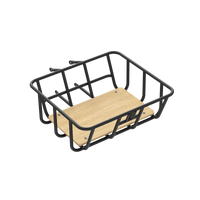

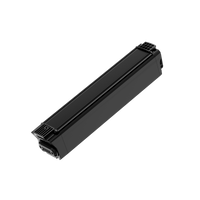


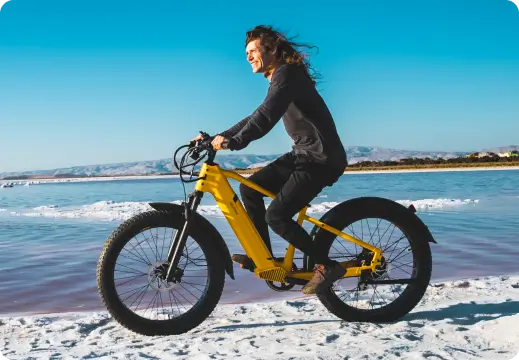






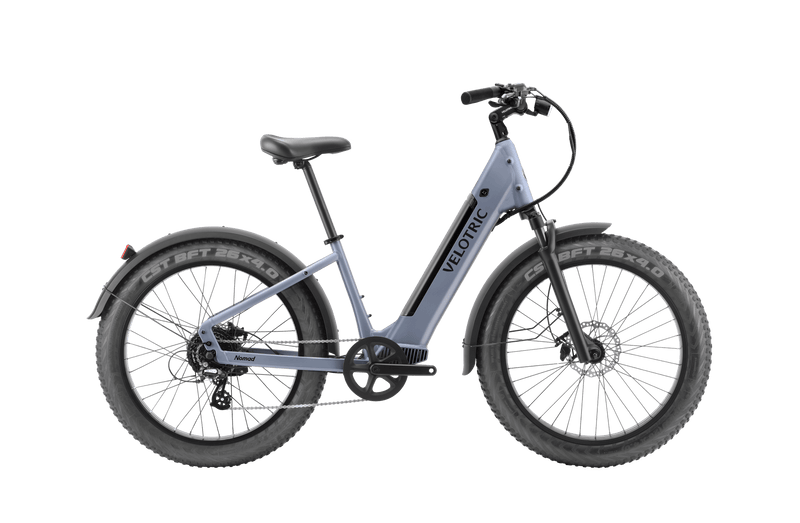

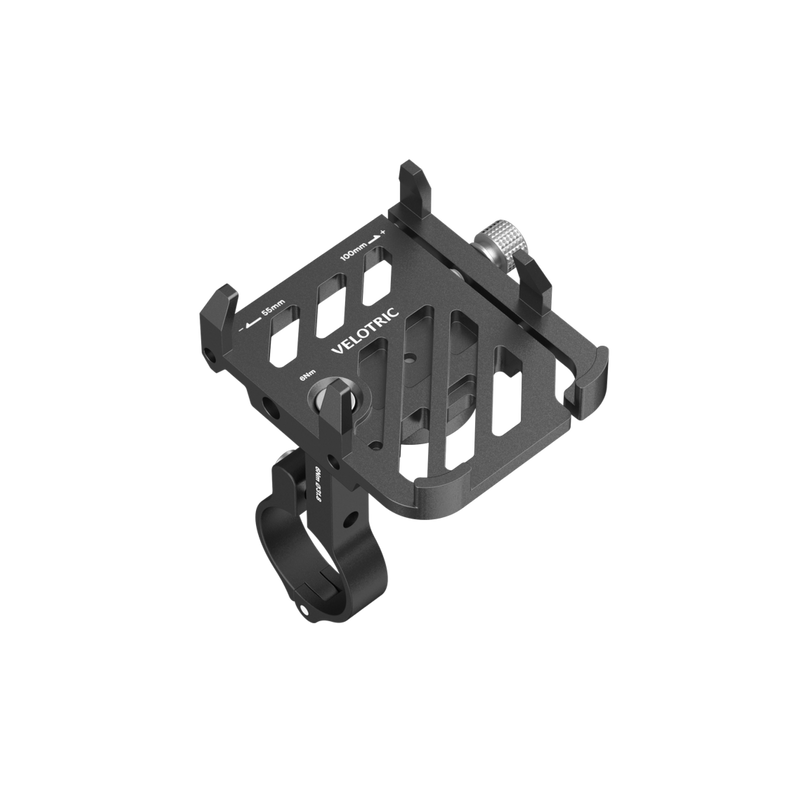
1 comment
I love my velotric ,electric bike it is so much fun. I will buy more of them